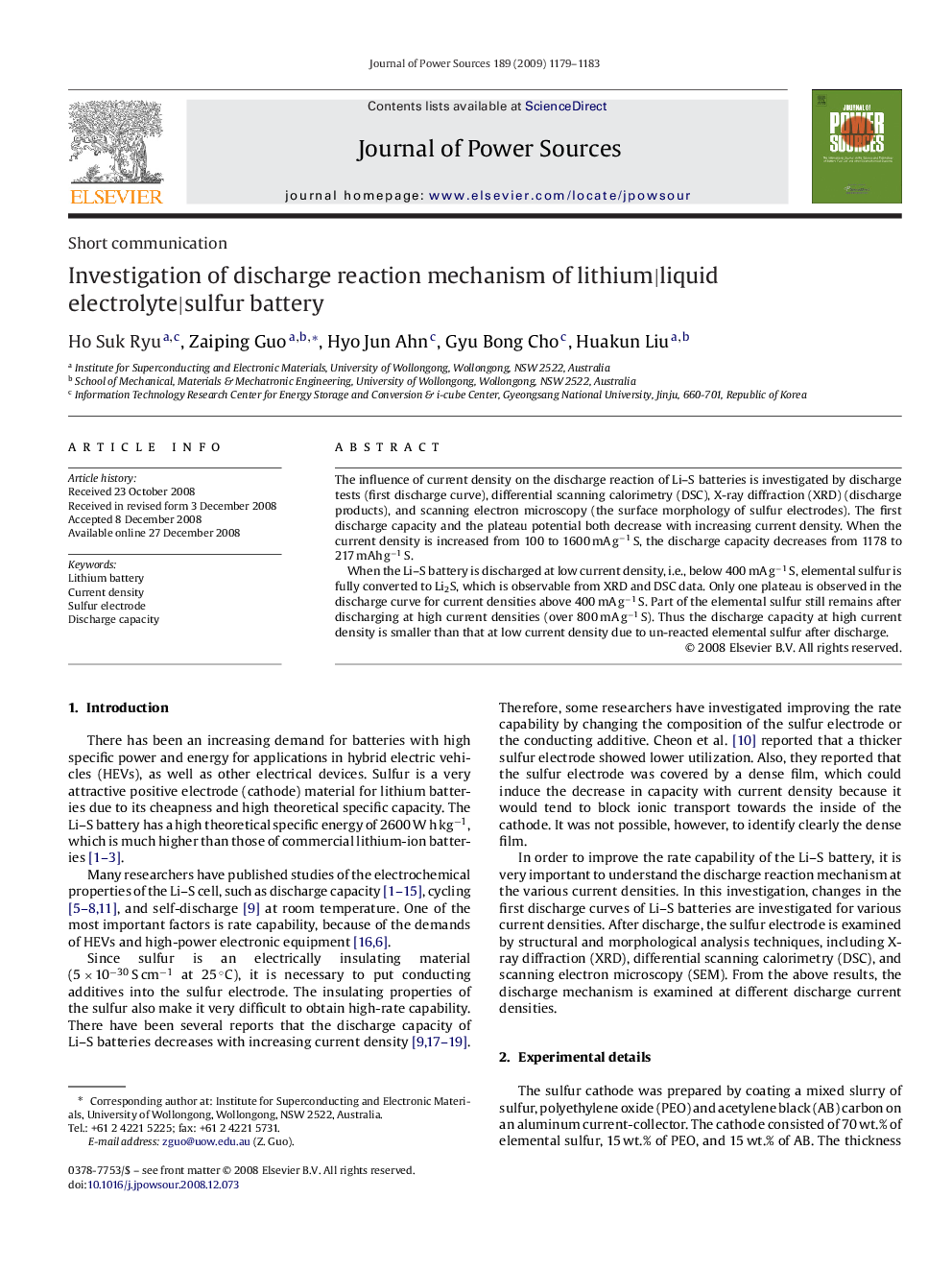| Article ID | Journal | Published Year | Pages | File Type |
|---|---|---|---|---|
| 1290000 | Journal of Power Sources | 2009 | 5 Pages |
The influence of current density on the discharge reaction of Li–S batteries is investigated by discharge tests (first discharge curve), differential scanning calorimetry (DSC), X-ray diffraction (XRD) (discharge products), and scanning electron microscopy (the surface morphology of sulfur electrodes). The first discharge capacity and the plateau potential both decrease with increasing current density. When the current density is increased from 100 to 1600 mA g−1 S, the discharge capacity decreases from 1178 to 217 mAh g−1 S.When the Li–S battery is discharged at low current density, i.e., below 400 mA g−1 S, elemental sulfur is fully converted to Li2S, which is observable from XRD and DSC data. Only one plateau is observed in the discharge curve for current densities above 400 mA g−1 S. Part of the elemental sulfur still remains after discharging at high current densities (over 800 mA g−1 S). Thus the discharge capacity at high current density is smaller than that at low current density due to un-reacted elemental sulfur after discharge.
